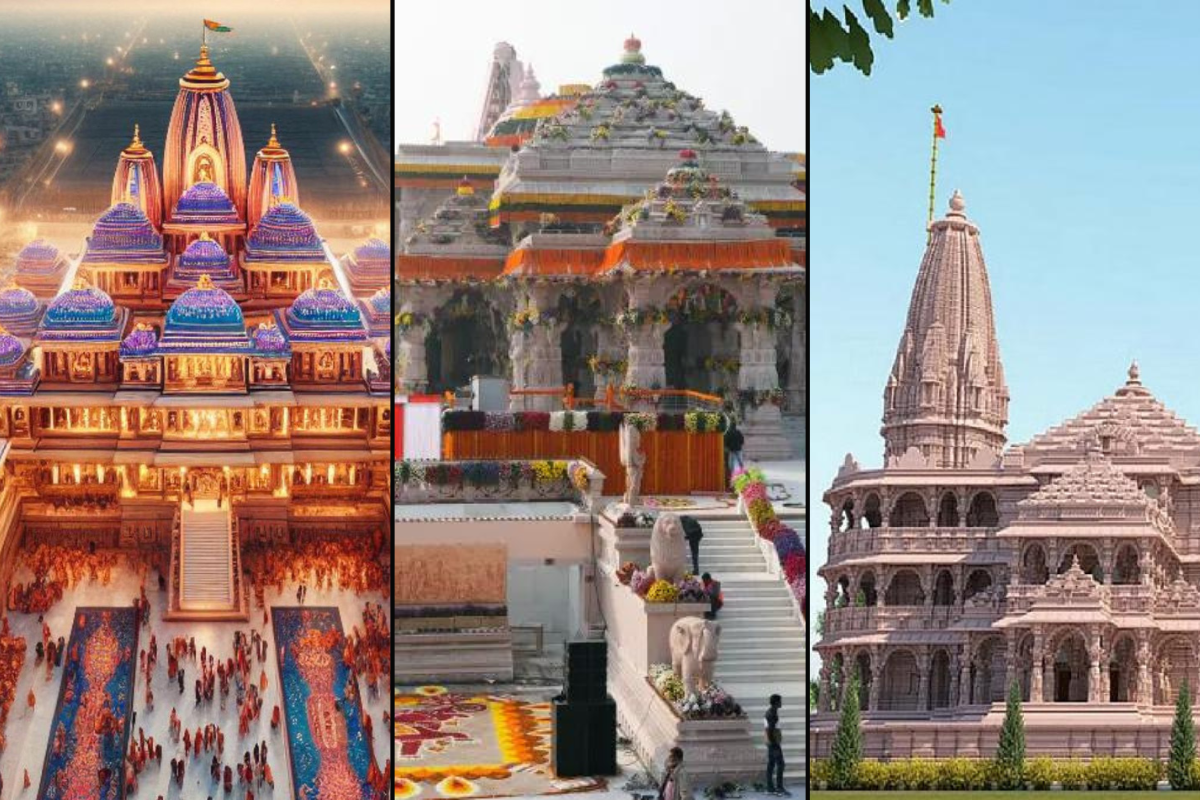In the heart of Ayodhya, where the sacred river Sarayu gently flows, lies a tale woven into the very fabric of India’s cultural tapestry—the saga of the Ram Mandir. Imagine standing on the hallowed grounds where millennia-old whispers echo, narrating a story that transcends time and resonates with the spirit of millions.
This is not merely a place of worship; it is a living testament to a legend that has captivated generations. The Ram Mandir, dedicated to Lord Ram, stands as an architectural marvel today, its foundations rooted in the legends of Ayodhya, a city steeped in history, myth, and faith.
Let us embark on a journey through the annals of time, where every stone in the temple walls seems to whisper tales of devotion, resilience, and the indomitable spirit that gave rise to this extraordinary edifice.
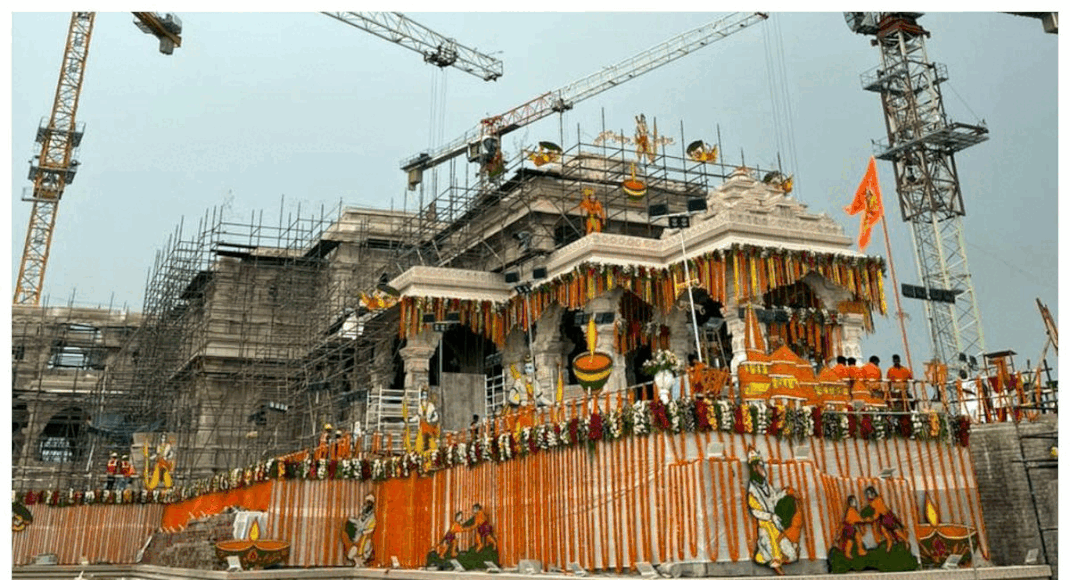
Ayodhya Ram Mandir Location (Which State, Nearest Airport etc)
Ayodhya is an old town in Uttar Pradesh, a state where elections are important. It’s a special place for Hindu pilgrims and attracts millions of visitors every year. Around 76,000 people live there, and it has a rich history and cultural importance.
How to Reach Ayodhya Ram Madir
Reaching Ayodhya is convenient with different transportation options. If you prefer flying, the closest airport is Chaudhary Charan Singh International Airport in Lucknow, just 50 km west of Ayodhya. Lucknow Airport has regular flights to major cities in India. Another option is Faizabad Airport, only 8 km away.
For those who prefer trains, Ayodhya has a railway station well-connected to cities in Uttar Pradesh, including Lucknow, Kanpur, Allahabad, Varanasi, and even Delhi. Trains operate daily, providing a reliable and affordable travel option.
If you’re considering a bus journey, Ayodhya is accessible by bus from neighboring cities in the state, offering a budget-friendly mode of transportation.
Alternatively, if you choose to fly and the nearest major airport is Lucknow, you can hire a cab to reach Ayodhya, approximately 130 km away. The cost of a cab from Lucknow airport to Ayodhya is around INR 2,000. Another major airport, Bamrauli Airport in Allahabad, is about 166 km from Ayodhya, providing additional travel choices.
How to reach Ayodhya by road
Ayodhya is well-connected to all major cities within Uttar Pradesh through a robust road network, making travel convenient for tourists. If you’re in nearby cities like Faizabad (7 km), Allahabad (166 km), Lucknow (134 km), or Varanasi (209 km), booking a cab is a convenient option to reach Ayodhya.
This allows travelers to enjoy a comfortable and efficient journey, exploring the historical town with ease.
How to reach Ayodhya by train
Ayodhya enjoys excellent railway connectivity with both nearby and major stations across North India. Situated on the broad gauge Mughalsarai-Lucknow line of the Northern Indian Railway, Ayodhya Railway Station is a pivotal hub for train travel.
Daily train services, such as the Lucknow Express, Varanasi Doon Express, and Delhi Faizabad Express, provide regular and convenient transportation options, linking Ayodhya with various destinations. Whether you are traveling locally or from farther regions, Ayodhya’s railway network ensures accessibility for all.
How to reach Ayodhya by bus
The Faizabad Bus Stand serves as the closest bus terminal to Ayodhya, with regular services provided by UPSRTC (Uttar Pradesh State Road Transport Corporation). These buses connect Ayodhya to key cities like Lucknow, Gorakhpur, Allahabad, and other major destinations in Uttar Pradesh on a daily basis.
Upon arriving at the Faizabad Bus Stand, travelers can easily find cycle rickshaws available for transportation to the railway station. The short ride typically costs around INR 30, offering an affordable and convenient way to reach the Ayodhya Railway Station from the bus stand.
Local transport in Ayodhya
Ayodhya offers a variety of transportation options for getting around the town, catering to the diverse needs of travelers. Taxis, buses, tempos, tongas, and rickshaws are all available for local transportation.
However, given its small size, the most convenient and popular modes of travel within Ayodhya are the rickshaws and auto-rickshaws (tempos). These nimble and efficient vehicles provide a hassle-free way to explore the town, allowing visitors to soak in the rich cultural and historical offerings of Ayodhya with ease.
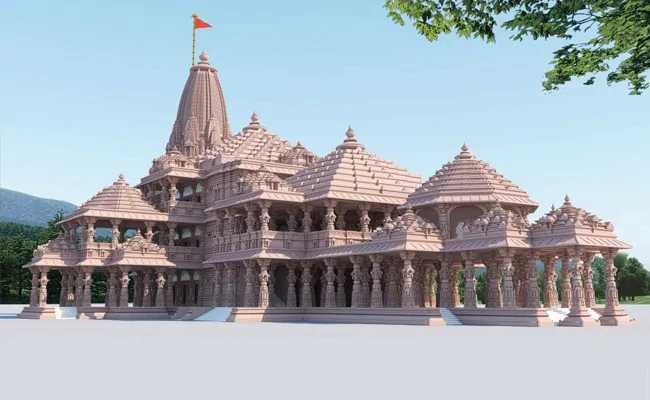
The Consecration Ceremony of Ayodhya Ram Mandir
The Ayodhya Ram Mandir is poised to witness the Pran Pratishtha ceremony on January 22, 2024. Led by Prime Minister Narendra Modi, the ritual adheres to prescribed customs, commencing at 12:20 p.m. and concluding by 1 p.m. This marks a significant moment in the temple’s consecration.
Ram Mandir of Ayodhya – Area
The sprawling Ayodhya Ram Mandir covers an expansive 54,700 square feet, occupying nearly 2.7 acres. Within the extensive Ram Mandir Complex, stretching across almost 70 acres, the meticulously designed space accommodates approximately a million devotees simultaneously.
This grand and well-planned complex ensures a tranquil and spiritually enriching experience for visitors and worshippers alike.
Ayodhya Ram Mandir – Height
Impressive in its dimensions, the temple spans 360 ft in length, 235 ft in width, and 161 ft in height. Towering three times the height of existing structures in the old city, it features five domes and a tower with a Garbh Griha (sanctum) designed to allow sunlight to illuminate the idol of Ram Lalla.
Timeline of Ayodhya Ram Mandir
- 1528-1529: Babur builds Babri Masjid
- 1850s: Communal violence begins
- 1949: Ram Idol found, intensifying tension
- 1992: Babri Masjid demolished
- 2019: SC declares Ayodhya as the birthplace, hands over land for the temple
- 2020: PM Modi performs Bhumi Poojan and lays the foundation stone
- 2023-24: The consecration ceremony of the Ayodhya Ram Temple is scheduled for January 22, 2024, with Prime Minister Narendra Modi, UP Chief Minister Yogi Adityanath, and RSS Chief Mohan Bhagwat set to address the event.
Construction Details of Ram Mandir of Ayodhya
Builders
The main structure of the Ram Mandir in Ayodhya is crafted by Larsen & Toubro, while Tata Consultancy Engineers Ltd oversees the development of allied facilities.
Building Material
Exquisite carved Rajasthan Bansi Paharpur stone, renowned for its beauty and strength, is the primary building material used in the construction.
Interior Design
Designed by Chandrakant Bhai Sompura, the temple boasts an octagonal-shaped sanctum and a circular structure perimeter, showcasing meticulous interior craftsmanship.
Lifespan
Engineered to endure for over 1,000 years, the temple undergoes rigorous testing, including stability assessments conducted by IIT Chennai and the Central Research Building Institute.
Visitor Influx
With over 50,000 daily visitors, this number is expected to surge to 100,000 post-inauguration, underscoring the cultural and spiritual significance of the Ayodhya Ram Mandir.
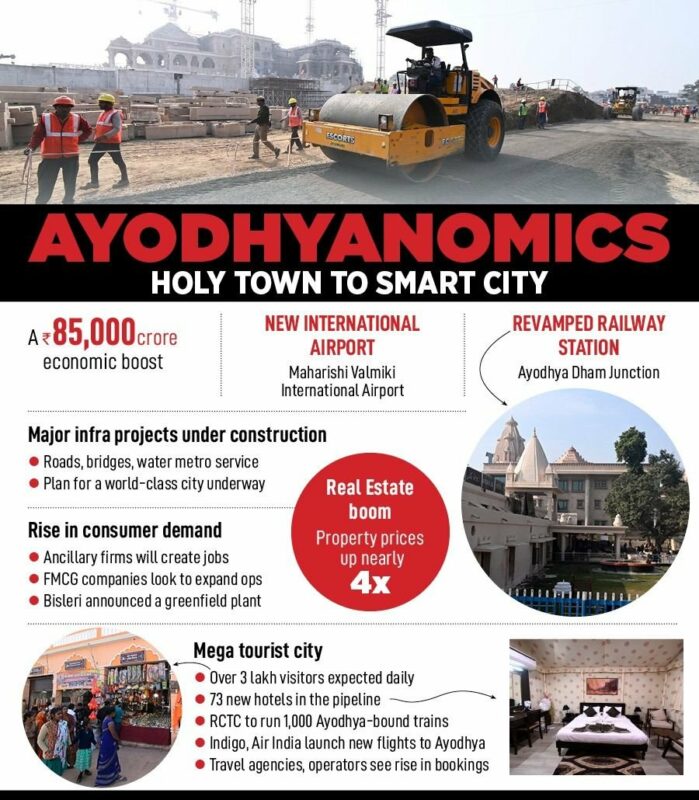
Impact on Real Estate
The construction of the Ram Mandir has had a profound impact on Ayodhya’s real estate landscape. Land rates have surged up to 10 times in the past decade, reflecting heightened demand. Notably, prominent developers have expressed interest, aligning land rates in Ayodhya with those of the state capital, Lucknow.
This transformative shift underscores the growing economic and developmental influence of the Ram Mandir on the local real estate market.
Ayodhya Ram Mandir Photo 2024
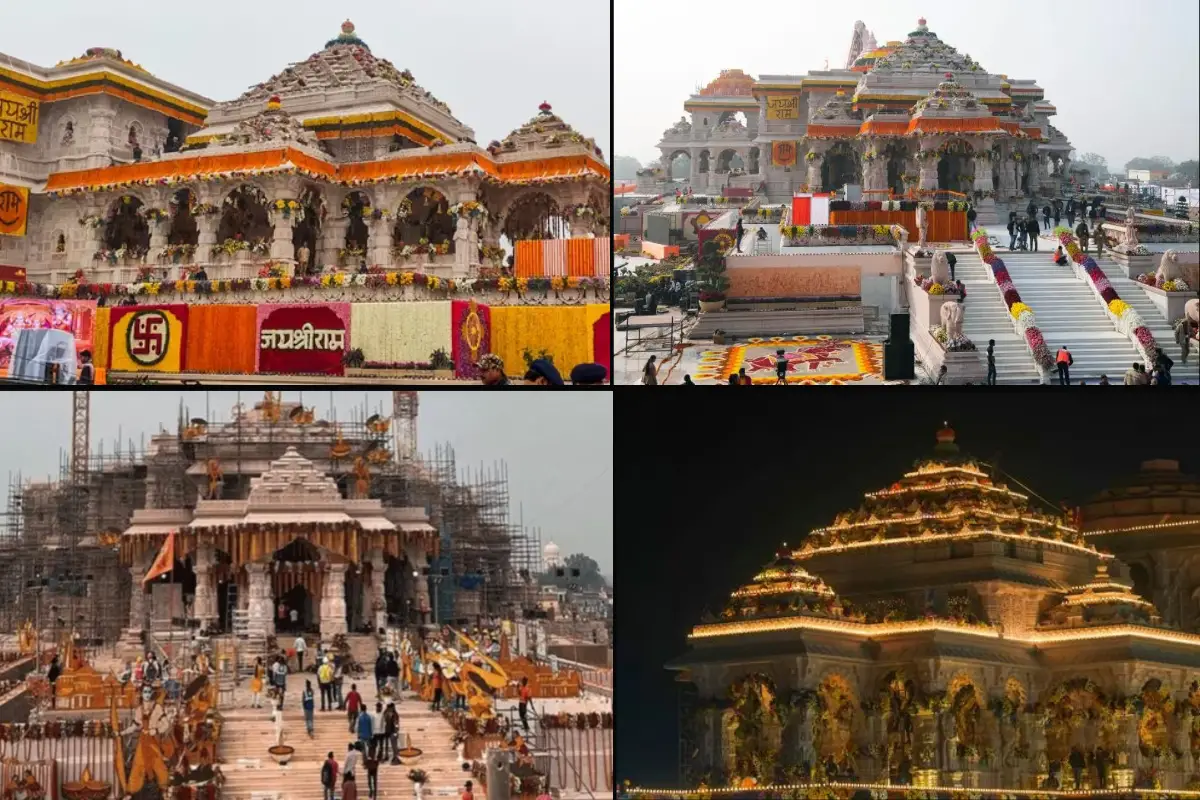
Ram Lala of Ayodhya – Image
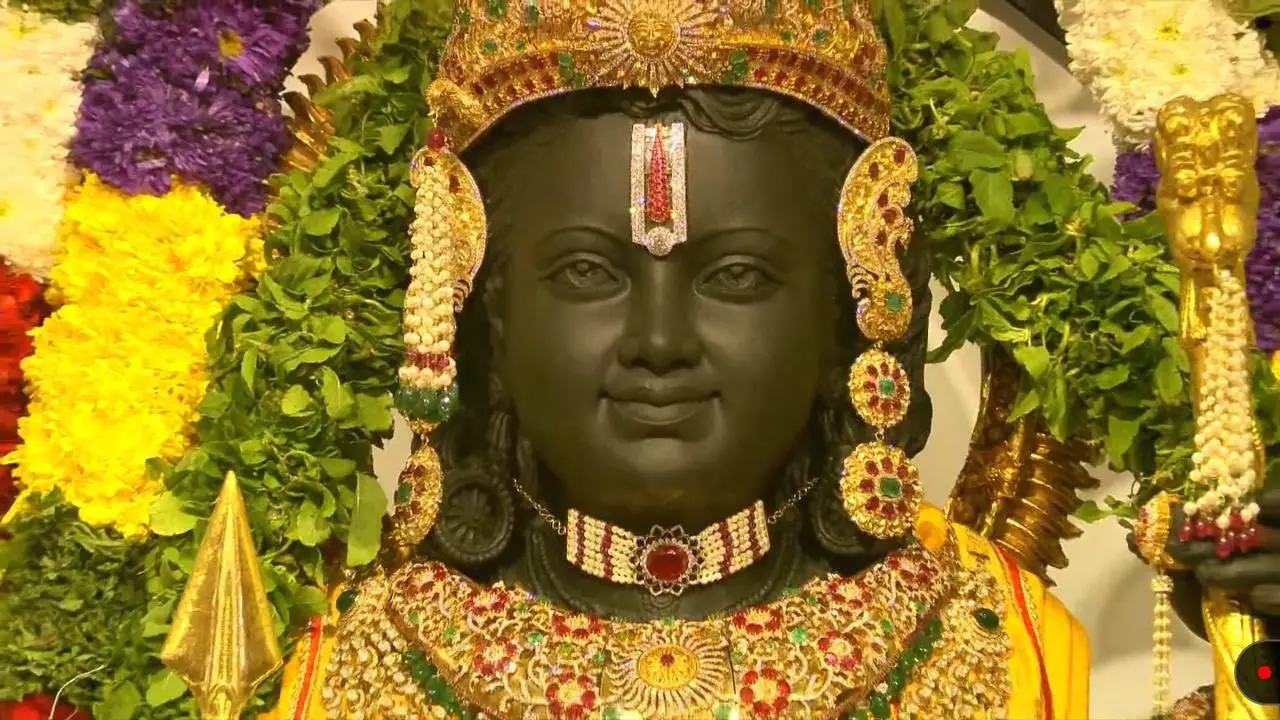
In a special puja ceremony held on Wednesday night, the idol of Ramlala found its revered place in the sanctum sanctorum of the temple. This sacred event stirred joy among netizens as magnificent images circulated online, capturing the significance of the moment.
The face of Ramlala, concealed by a yellow cloth, will be unveiled during the Pran Pratishtha ceremony scheduled for January 22. Crafted by Arun Yogiraj of Mysore, the 51-inch tall idol, sculpted from black stone, beautifully portrays Lord Ram as a 5-year-old standing on a lotus. The consecration rituals, which commenced on January 16, will culminate in the main ceremony on January 22, with Prime Minister Narendra Modi playing a central role.

